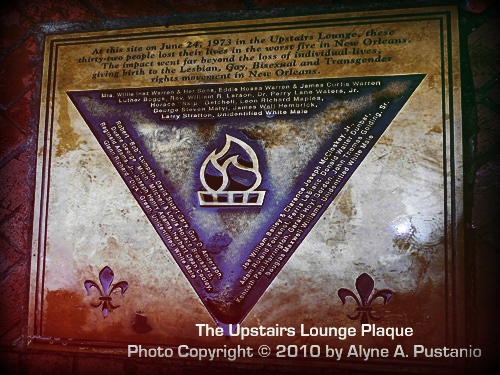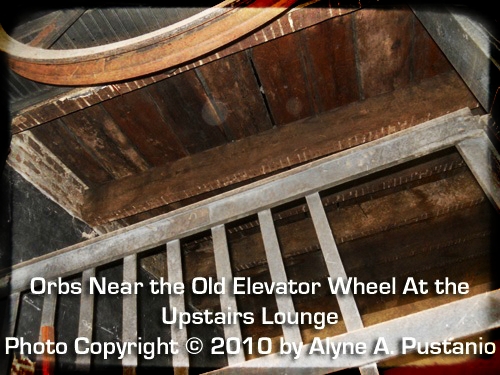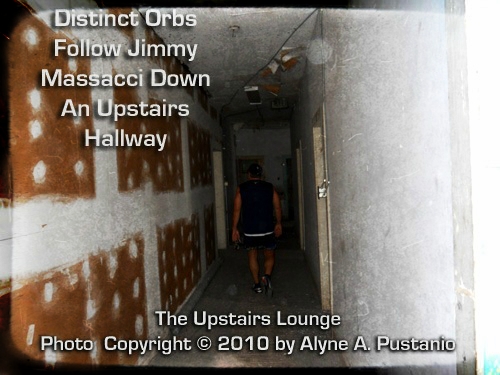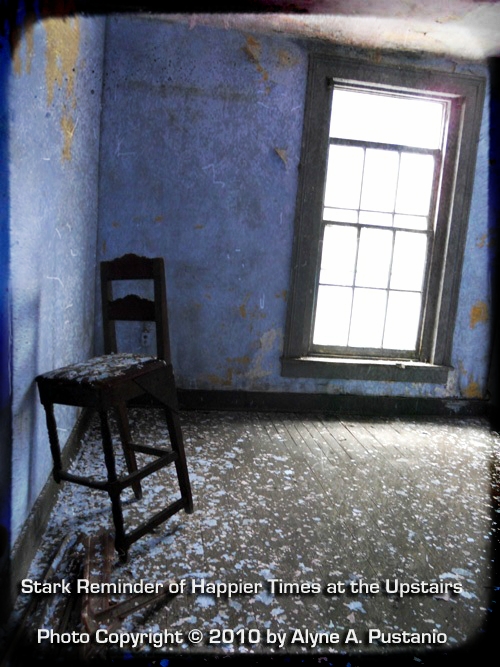|
On the evening of Sunday,
June 24, 1973, James “Jim” Massacci, Sr.
was relaxing at home with his family
when a call came in from his bar, The
Jimani, located at the corner of
Iberville and Chartres Streets in the
French Quarter. The employee on the
other end of the line told Massacci that
smoke was coming from the windows of
another lounge upstairs from the Jimani,
and that the police and fire department
had been called. Although it didn’t
sound like much of an emergency,
Massacci decided to head down to the bar
anyway, just to check things out; he
brought his young son along.
A few hours later,
Massacci and his son, twelve-year-old
Jimmy, were standing by in horror,
surveying the remnants of one of the
most gruesome and tragic events in the
history of modern New Orleans. And on
that night they became members of a very
exclusive club, a small group of friends
and neighbors who could say, in the
intervening years, that they were there
the night the Upstairs Lounge went out
in flames.

Upstairs Front Door with
Barred Window Next to It
But in the landscape of
1973 New Orleans, “Gay Pride” did not
exist. A handful of gay bars were
scattered around the French Quarter,
usually in derelict or crime-ridden
neighborhoods that provided secrecy in a
city where gay life was lived almost
entirely underground.
The Upstairs Lounge was
located on the second floor of a
three-story building at the corner of
Iberville and Chartres Streets. Jim
Massacci’s Jimani bar occupied (and
still occupies) the ground floor, and
the third story consisted of bare,
sparsely furnished “flop” rooms that
Upstairs patrons sometimes used for
sexual liaisons.
That Sunday, June 24th,
was the last day of national Pride
Weekend and the fourth anniversary of
the Stonewall Gay Pride Uprising of
1969. At the time, the bar was also the
temporary home of the small New Orleans
congregation of the Metropolitan
Community Church (MCC), the nation’s
first gay church that had been founded
in Los Angeles in 1969.
Worship services had been
held earlier in the day and congregation
members had stayed to join regular
patrons for an afternoon of free beer
and an all-you-can-eat special. At the
height of the activities, almost 130
people were jammed into the bar, but as
the evening wore on, and the beer ran
out, the number dwindled to
approximately 60, most of whom were MCC
members.
The building that housed
the Upstairs Lounge was one of a rare
few left in the French Quarter that had
a wooden exterior; the lounge had only
one entrance, up a wooden flight of
steps and a narrow hallway from a door
that opened directly onto the Iberville
Street side. The lounge consisted of
three open rooms, decorated in the plush
style popularized during the 1970’s,
with long bars and a cabaret stage
complete with a baby grand piano.
MCC members and Upstairs
regulars often gathered around the piano
for sing-a-longs; one popular song,
“United We Stand” by the Brotherhood of
Man, had become a kind of anthem for the
Upstairs crowd. One of the most popular
performers at the Upstairs was pianist
George “Bud” Matyi, a popular New
Orleans entertainer whose trademark song
was a rendition of the 70’s sailor hit
“Brandy.” He, as well as house pianist
David Stuart Gary, would perish in the
horrific blaze.

The Upstairs Lounge
Commerative Plaque ~ A Memorial Plaque
Fund
was set-up through the
Vieux Carre Metropolitan Community
Church.
Sitting with Jimmy
Massacci, Jr. in his second-floor corner
office on a humid, rainy June day, the
events of 37 years ago seem vividly
real.
“That window right
there,” says Massacci, pointing at the
window to my right, “that’s the window
where the man got stuck in the bars and
burned alive.” Immediately, images I
had seen of the charred corpse of MCC
Rev. William Larson, frozen in the
grisly pangs of death, come to mind. “I
think he was there all that next day,
while they were in here investigating.
Didn’t bother to cover him up or
anything.”
For Jimmy Massacci (James
Jr.) the Upstairs Lounge remains a
prominent and sobering memory of his
childhood. “I’ll never forget it,” he
says, shaking his head.
The Massacci family came
to New Orleans a generation ago when
James Massacci, Sr. agreed to take on
the job of managing and promoting famed
New Orleans trumpeter Al Hirt. “Little
Jimmy” was always at his father’s side
and the French Quarter soon became a
familiar stomping ground; it was a
natural progression when James Massacci
went into the bar business for himself
and in the early 70’s James and his wife
JoAnn opened the Jimani.
“Jimani? Gemini?” I
ask. “How do you pronounce it exactly?”
Jimmy laughs. “It’s a
combination of my parents’ names, my
mom’s idea – Jim And I, see?”
He continues, “Of course
a lot of what you see up here [in the
old lounge area] has changed a lot since
it was the Upstairs. We’ve had several
different businesses making changes over
time, but if you look around you’ll see
the original brick walls and especially
around the windows and at the top of the
ceilings, you still see the charred
bricks. And I’ve left a lot of the bars
in place,” he adds, “just to show what
they had to deal with to try to get out
that night.”

Looking around, I comment
on how horrific it must have been.
“I’ll never forget it as long as I
live,” he says. “I can tell you that.
“Those stairs you came up
from outside,” Massacci says, “well
those are the same stairs and the
outside door is the same. It was kept
locked. Whoever did it had to be a
regular and had to know the routine.
“They threw something all
over the stairs, probably lighter fluid,
and then they tossed in a Molotov
cocktail and the whole thing exploded.
But the people in the Upstairs wouldn’t
have known right away if they didn’t
hear the buzzer.” Massacci shakes his
head. “They opened that little panel
and it [flames] just shot into the room
like a big fireball.”

Beyond the Front Door: The Stairway
to The Upstairs Lounge photo
Copyright © 2010 by Alyne A.
Pustanio
That night, the dwindling
group of friends in the Upstairs lounge
gathered around the piano, as they had
so often, and sang a few choruses of
“United We Stand,” swaying together and
repeating the verses, happy in each
others’ company and celebrating the
remains of Pride Weekend. David Gary, a
pianist who played regularly in the
lounge of the new Marriott Hotel across
the street, was on the keyboards; soon
Bud Matyi would take his turn and round
out the evening.
At approximately 7:56
p.m. the buzzer sounded on the
downstairs door. This usually indicated
that a cab had arrived, but curiously no
one had called a cab. The single
second-floor door into the Upstairs
lounge was one of the old “Speakeasy”
kind with the little sliding panel set
at eye level so that patrons could check
out who was in the stairwell. Someone
went to the door and slid the speakeasy
panel back. Like a stream of napalm,
flames shot through the little hole into
the plush Upstairs interior. Velvet
curtains, silk panels, damask table
cloths, heavy stage curtains, carpets –
within minutes everything was consumed
in flames. The bar became an inferno.
Emergency exits were not
marked and the windows that weren’t
jammed with boards were covered with
iron bars. The two fire escapes
suspended on the sides of the buildings
hovered a full story above the street;
victims who made it to the fire escapes,
some of them in flames, had to jump the
full story to the street below,
receiving worse injuries as they did so.
A very few who were thin
enough, and frightened enough, managed
to squeeze through the iron bars at some
of the windows. Unfortunately, however,
when MCC Rev. William Larson attempted
to escape the same way he became wedged
in the bars and burned to death.
Witnesses gathered on the street
listened in helpless horror to his cries
of, “No! God, no! No!”
Larsen’s body would be
left there throughout the next day as
police and fire investigators plumbed
the scene. The sight was shown
endlessly on local television and even
made the front page of the local New
Orleans papers. Not a single person
thought to provide the pastor’s corpse
the decency of covering his remains.
When they arrived on the
scene, James Massacci and his son Jimmy
found the streets blocked off for
several blocks. Police vehicles and
fire trucks were lined up around the
building and groups of people were
standing around looking up and
pointing. The acrid smell of smoke, and
of something else that Jimmy couldn’t
identify at the time, filled the night
air.
James Massacci took his
son to a vacant lot across the street
from the bar near the Marriott and
admonished him to “stay right here”
while he [James] went over to the
smoldering remains of the building for a
closer look.
Jimmy Massacci watched as
his dad convened with police and
firemen; they, like the crowds nearby,
were looking and pointing. Jimmy
remembers a kind of excitement in the
air as local news crews arrived on the
scene and started filming or
interviewing onlookers. In the stark
klieg lights of the TV cameras, the
charred building and the strange objects
at the windows looked even more
surreal. But Jimmy was enthralled.
“Well, it went on into
the next day,” he continues his
account. “The police and firemen had to
investigate and then they had to remove
the bodies.”
Newspaper reports of the
time described bodies “stacked like
pancakes” at the exit doors, and firemen
“wading through charred flesh … some of
the bodies had been completely cooked.”
“It’s a smell I’LL never
forget,” Jimmy says, grimacing. “Burned
meat, or maybe old, rotten burned meat.
Just horrible. And they didn’t seem
like they were in any hurry to get the
bodies out of here.
“Of course my dad was
anxious about the whole thing,” he adds,
“because it was horrible but also he had
lost his business. The bar [he motions
downstairs to the Jimani] had so much
water damage it was almost a complete
loss. So he [James, Sr.] had lost his
livelihood and his investment. He could
have lost even more that night, but one
of his employees had the presence of
mind to go into the bar the next day and
get the cash box and the money from the
register and,” he hesitates, “this is
horrible but it really happened … When
the guy was coming out the front door of
the bar, the body that was in that
window [the pastor’s frozen burned
corpse] broke apart and fell on him!”
A stunted silence came
over us as the rain crackled on the
windows outside. Jimmy Massacci nods
his head. “That really happened.”

In addition to the
horribly incinerated Rev. Larson,
twenty-eight other individuals lost
their lives that night, and three others
later died of injuries received in the
fire. The death toll was the worst of
any fire in New Orleans history up to
that time, including the great fire of
1788 that burned the old French Quarter
to the ground. It was also the largest
mass murder of homosexuals ever in the
U.S. and what is more, it is a crime
that has never been solved.
But the city of New
Orleans did its level best to ignore the
whole event. The fire exposed a
surprisingly deep fissure of homophobia
in a city that has historically prided
itself on its egalitarianism and
cosmopolitan tolerance. For the first
time, New Orleans had to confront the
reality of a thriving homosexual
community in its midst. Evidently, this
was a very hard lesson for it to learn.

News coverage, both print
and television, made every effort to
omit the fact that the fire had anything
to do with homosexuals in the community,
even though a gay bar and members of a
gay church congregation had been
involved. The stories that appeared
included quotes from local citizens that
can only be described as ignorant, such
as a cab driver who said “I hoped the
fire burned their dresses off,” and one
woman who opined that “the Lord … cooked
them.” Local talk radio hosts were
making jokes such as, “What do they bury
the ashes of queers in?” The answer:
“Fruit jars.”
Statements from the local
police and fire chiefs, though less
caustic, were equally dismissive, with
NOPD chief detective Henry Morris
pointing out that identifying the
victims would be especially problematic
because “thieves hung out there [with
these people] … and you know it was a
queer bar.”
The story disappeared
from television and print news within a
few days.
For the victims, there
seemed no rest. Churches across the
city, churches of all faiths, refused to
allow services to be held for the dead,
and even forbade memorial prayer
meetings in their honor. The rector of
St. George’s Episcopal Church agreed to
allow a small prayer service on the
Monday evening following the event and
was promptly rebuked by his bishop.
Eventually, a local Unitarian church and
St. Mark’s United Methodist Church in
the French Quarter offered sanctuary for
those seeking to share their grief and
mourn the deaths.
City officials made
gargantuan efforts to completely ignore
the tragedy; no statements of any kind
were ever issued from the City
administration. Even more callous and
stunning, some families would not even
step forward to claim the bodies of
their dead sons, so rabid was their fear
of being vilified for acknowledging that
a child of theirs might have been gay.
Several anonymous individuals stepped
forward and paid for some burials, but
the unclaimed, the unwanted, were dumped
together in a mass grave in a Potter’s
Field on the outskirts of New Orleans,
buried alongside criminals, vagrants,
and departed pets.

“My father was a very
tolerant man,” Jimmy tells me as we
leave his office for a tour of the
building. “He was a man who said, ‘live
and let live,’ you know? It didn’t
matter to him if they were gay or
straight, he treated everyone the same
way.”
Then Jimmy laughs as he
remembers how his father used to get
annoyed with the noise from the Upstairs
dance floor. “You know what it was
like,” he laughs, “I mean it was the
‘70’s, you know, and everyone was
wearing those stupid clogs with the
wooden platform heels. Well, when
they’d get started up here dancing, and
with the music going, the sound of those
shoes just drove my dad nuts!” He
laughs, “That’s the only time he had to
come up here and tell them, ‘Alright!
Keep it down with those damn shoes!’”
Jimmy also shares a
little known fact about his father.
“After the fire, he was the only one who
put up a reward for the capture of
whoever did it. He felt awful about it
and put up his own money.”
Asked if they had any
leads, or if his dad had any suspicions
about who it might have been, Jimmy
shrugs, “Well, they caught a guy a day
or so after in a diner over on Royal
Street. He had been bragging that he
was the one who did it, but the police
finally said he was just some nut taking
credit for it, for ‘killing fags,’ so
they let him go.”
But Jimmy also gives a
knowing nod to my suggestion that rumors
are still rampant in the New Orleans gay
community. “Oh yeah,” he says,
“somebody, somewhere knows who did it.”

We tour the empty
portions of the second level – some
parts have been converted into a kitchen
serving food to Jimani customers below –
and then Jimmy takes me to the little
used third story, a section of the
building barely changed from the time of
the fire thirty-seven years ago.
Digital camera images
reveal the presence of several possible
positive orbs and definite cold spots
are encountered here. These bare,
forlorn apartments, where the gays of
the Upstairs had carved out what little
intimate time they could in the
hit-and-miss sexscape of the early
1970’s, have a heavy atmosphere of
sadness. The rain tapping on the roof
adds to the gloom. I’m not unhappy as
we wrap up the tour and return to
Jimmy’s office.
When asked if he has ever
had any strange experiences in the
building, anything that he might
categorize as supernatural, at first
Jimmy shrugs. This doesn’t surprise
me. At 50, Jimmy Massacci is fit and
muscular; straightforward and
level-headed, I can tell he is not the
type of man that scares easily.
“Well, I hear things
every now and then, when I’m here late
or alone,” he admits, then his eyes
light up. “I will tell you this,
though: One afternoon I was here with a
friend of mine; the bar wasn’t open and
I had just stopped by, and as soon as we
came up here I thought I heard
something. I looked at my friend and he
nodded that he heard it, too.
“My first thought is,
‘Well, it’s a homeless person or
something,’ you know? Maybe a vagrant
got in, but just in case, I had my gun
with me. We both had flashlights and we
went off into the empty part [points
toward the little-used second story
area] and I could definitely hear
something by this time. You’re going to
laugh,” he says with a grin, “but it was
chains rattling.”
I do laugh. “That’s a
classic!”
“Yeah, but it was
definitely chains, because there’s an
old elevator in here from years ago, one
of those old crank kind with the big
wheel and the chains,” Jimmy replies.
“We don’t use it because it’s blocked
top and bottom and can’t go anywhere,
but the mechanism is all still there
from the days when this was a cotton
mill.
“So my friend and I go up
to where the chains and the wheel are
and we see that the old chains are
moving – they’re swinging back and
forth. I even asked my friend, ‘Is that
chain moving,’ and he’s already backing
up,” Jimmy laughs remembering his
friend’s reaction. “And then all of a
sudden, there’s this feeling of ice cold
air and I’m standing in it. And let me
tell you, it was hot like it is today,
and those rooms up there get unbearable
in the heat. That cold breeze came out
of nowhere, and it was blowing the
chains!”
Jimmy laughed and held up
his hands. “I said, ‘That’s it! We’re
out of here!’ I told it, ‘Everything’s
OK! We’re leaving right now!’ and we
hauled our asses downstairs and got the
hell out! THAT scared the hell out of
me!”
On the 30th
anniversary of the Upstairs Lounge fire
a plaque appeared on the sidewalk in
front of the door outside Jimmy
Massacci’s bar.
“I never knew anything
about it!” he says. “I was out of
town. I come back and there’s this
plaque there all of a sudden. I mean,
I’m glad it’s there, it should have been
put there a long time ago, but no one
even bothered to tell me about it, you
know?”
Jimmy naturally takes the
history of the Upstairs fire very
seriously and not the least because it
had a very dramatic and real effect on
his personal life.
“My dad never forgot
those people who died,” Jimmy said. “He
kept that reward out there for years,
but of course nobody ever came forward.
Another thing about my dad, that most
people didn’t know [James, Sr. has
passed on] is that he was always into
that esoteric stuff – he believed in
astrology and all that, and I think the
their spirits just are not at rest.”
When asked what he
thought might help the spirits to find
peace Jimmy minces no words, “I think
they need to be acknowledged and
remembered! I mean, there’s a huge gay
community in this city now and they have
Southern Decadence every year, and I can
tell you, there’s never a thought given
to the Upstairs and the men who died
there. I mean, those men died in part
so that the gay community could come out
and live and be what it is today. At
the very least, somebody ought to
acknowledge that."
THE
INVESTIGATION
In late June, close
to the 37th anniversary
of the Upstairs fire, Jimmy Massacci,
Jr. is providing exclusive,
all-access to the old Upstairs
Lounge and the remainder of his
building to members of LOUISIANA
STATE PARANORMAL RESEARCH SOCIETY
for the first-ever in-depth,
extended, professional paranormal
investigation of the premises.
LSPR-Society will be
searching for residual evidence of
the traumatic events, seeking
contact with souls still trapped
there, and gathering evidence in the
first leg of a quest to bring to the
UPSTAIRS and the MASSACCI family the
recognition, acknowledgement, and
validation they so richly deserve.
|